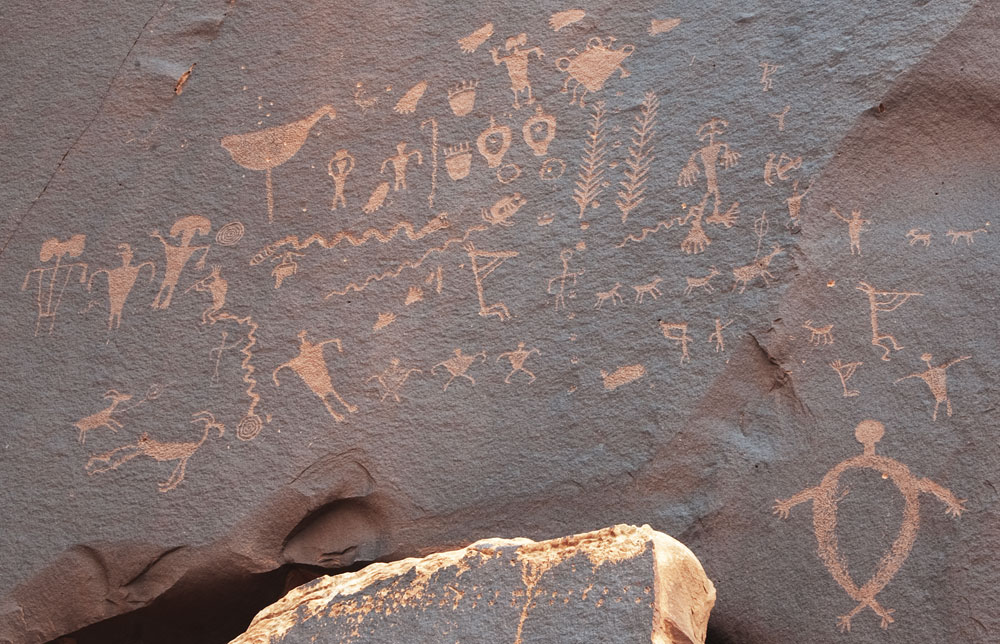
Ancestral Pueblo panel with flute players
The Hopi kachina Kokopelli has a hump and is associated with fertility, but traditionally does not carry a flute. Elder Hopis have referred to flute-playing rock art figures as "cicadas," noise-making insects with a flute-like proboscis. The cicada is an important Hopi figure, believed to bring the plant-nurturing heat essential for a good harvest.1
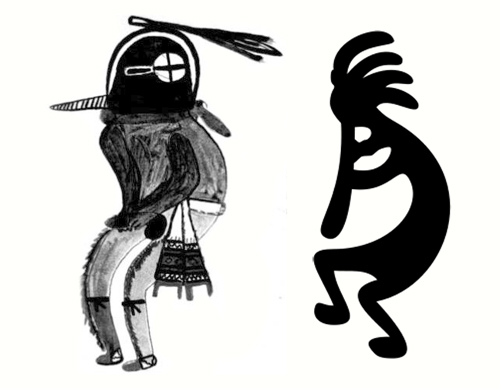
1903 Hopi Kokopelli drawing and the contemporary icon.

Ancestral Puebloan flute player displaying fertility characteristic of the traditional Kokopelli kachina.
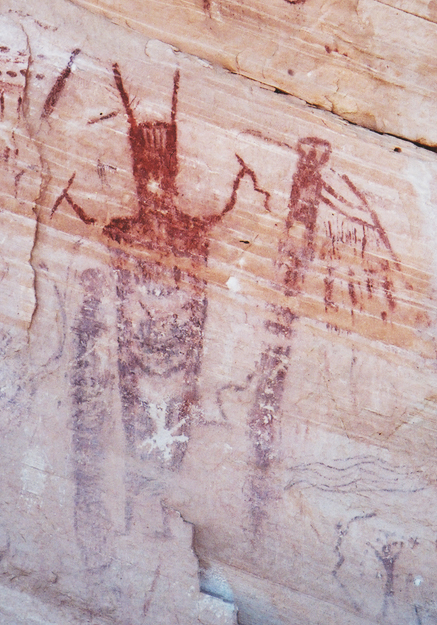
Possibly an Archaic era painted flute player.
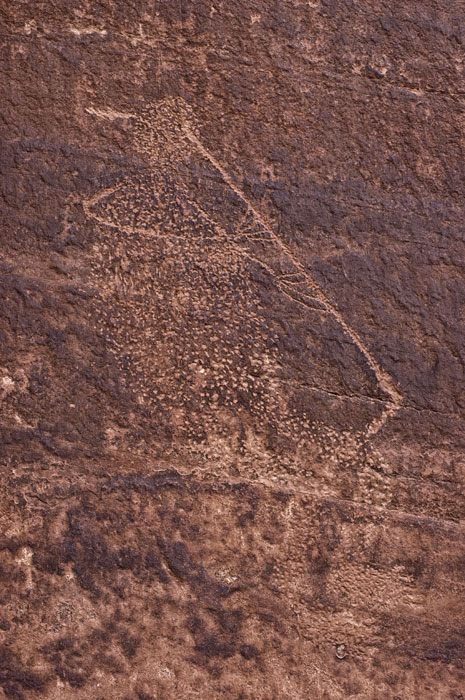
An unusual stipple pecked flute player.
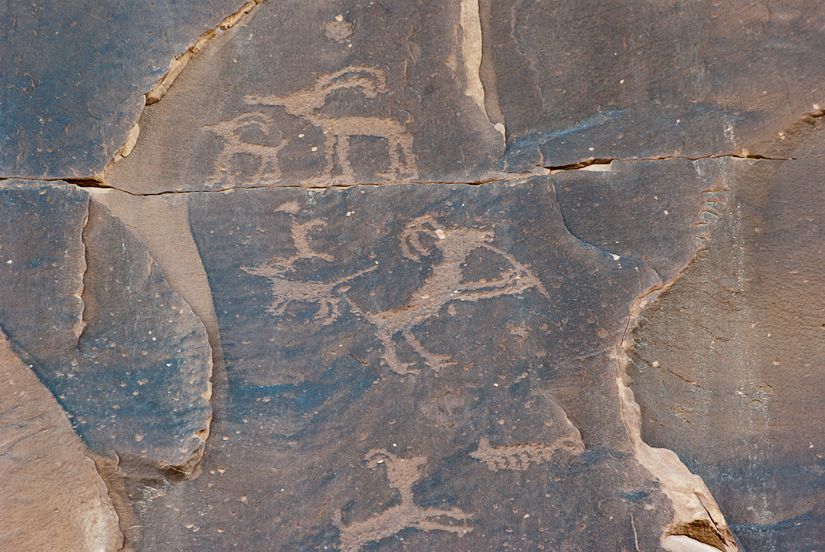
A flute-playing sheep, possibly Fremont.
Notes
1. Ekkehart Malotki, Kokopelli: The Making of an Icon (Lincoln, NE: University of Nebraska Press, 2000).
 Flute Players
Flute Players